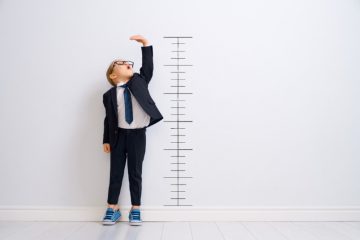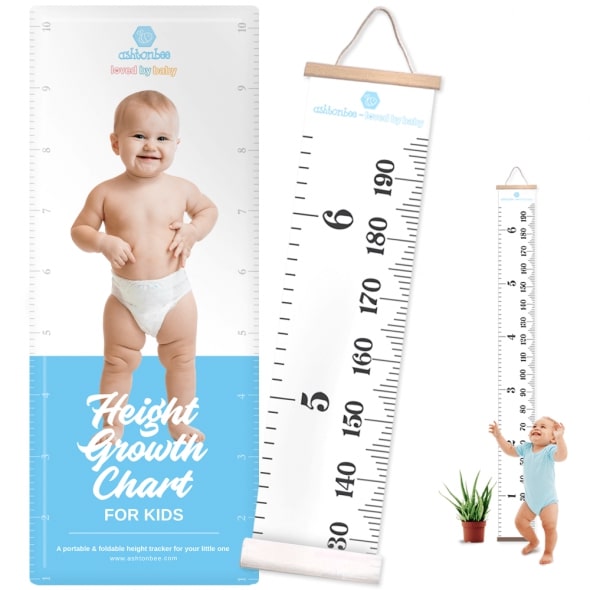
When it comes to your child’s growth, you want to be on top of it. You want to make sure they are hitting all the right milestones and that their development is on track. Of course, this comes with checking their physical aspects every day. But, more than that, you should also keep an eye on how they are growing mentally compared to other kids their age. By carrying out this parenting habit, you help yourself ease the fear of any potential problems that your child may experience.
It’s normal to be conscious of your kid’s progress. By reading this blog post, you will also discover some tips on monitoring your child’s growth and what to do if you have any concerns.
Parenting Checklist: Observing Your Child’s Breakthrough
It’s a good idea to keep an eye on your child’s development, but what should you be looking out for in particular? As your child grows, keep an eye out for the following aspects:
- Motor Skills Development
Incorporating your child’s motor skills is one of the most important things to keep an eye on. Motor skills are the ability to control one’s muscles and move one’s body, which develops with time. As they become older, you’ll observe that they get more coordinated and capable of performing more complex motions. Here are other specific things you need to know about motor skills:
- Gross Motor Skills: These abilities involve large muscle groups and movements like walking, running, and jumping. Most children will reach the development milestones of their gross motor skills between 12 and 18 months old. Parents can encourage their child’s gross motor development by providing opportunities to explore their environment through play. For example, they can set up an obstacle course in the backyard or take them for regular outings to the park.
- Fine Motor Skills: These abilities, on the other hand, involve smaller muscle groups and movements such as grasping objects, using utensils, and writing. Children will reach the development milestones of fine motor skills between 18 and 24 months old. The development of fine motor skills can be encouraged by providing activities that require the hands, such as puzzles, painting, or blocks.
- Social Skills Development
As parents, you should encourage children to interact with others. This comes with activities such as playdates or outdoor adventures with other kids. It’s also imperative to highlight and reward children when they exhibit positive social habits. But more importantly, you need to be consistent in observing your kid to see if they are comfortable interacting with others.
- Is your child shy or withdrawn?
- Do they enjoy being around other people?
- Is your kid willing to give and take turns with toys?
Talk to your pediatrician if you’re concerned about your child’s social skills. They can provide guidance and resources to help your child thrive socially. By monitoring our children’s social skills, we can help them grow into happy, well-adjusted adults.
- Language Skills Development
It would be best if you started encouraging your kid’s language development by taking some time each day to read with your child and chat about what you’re doing, what they’re doing, and anything else that comes to mind. Toddlers love hearing stories, and this is a great way for them to learn new words and practice using them.
In response, all you have to do is listen to your child’s speech and start ticking off the box if there’s progress.
- Is your child babbling?
- Can they say a few words?
- Are they putting words together in sentences?
- Is there no communication at all?
- Physical Changes
There are a few different ways to measure a child’s growth. It can be through checking the child’s skin tone or appearance, and tracking their oral hygiene, hair, teeth, and nail growth.
But the most common method is to use height and weight measurements. A height and weight chart for kids can help you keep track of your child’s body weight and height over time and compare it to other kids their age. Head circumference is another important measure of physical development, particularly in babies. You can use a tape measure to determine the size of your child’s head by wrapping it around.
By checking these key indicators, parents can ensure that their child is developing properly and get them the help they need if there are any concerns.
Height Chart for Kids: The Best Partner for Your Child’s Milestones

If you’re looking for a fun and easy way to track your child’s growth, a kids’ height chart is the perfect solution. A height chart is a diagram that shows the progress of your child’s height over time. This baby chart is an important tool to quickly and easily see if they are growing normally or if any issues need to be addressed.
There are many different types of height charts available, but the best type of chart for parents to use is the one that is designed specifically for kids. Thankfully, Ashtonbee makes it possible. Here’s why:
- Ashtonbee’s height growth chart makes it easy for parents to track their child’s growth since it can be written. All parents have to do is measure their child’s height at regular intervals and mark it on the chart using a permanent or washable fine point marker.
- More than the parents, height charts are a fun way for kids to track their growth. Many kids enjoy seeing themselves “grow” on the chart over time. Moreover, charts can also be fun for kids to see who is “winning” the growth race!
- Ashtonbee is also committed to assisting the baby’s health progress. Height charts can help parents spot any potential problems with their child’s growth. If a child’s growth rate suddenly slows down or stops, it may signify a medical problem.
- The height chart from Ashtonbee is incredibly durable and can survive everyday use. It’s made of canvas, unlike other traditional charts made of paperboard.
- Our height chart is easy to set up with its rope fastened to its top. Plus, it can also be rolled when not in use anymore.
The best height charts for kids are made with parents in mind. These charts are easy to read and understand, and they provide parents with all the information they need to know about their child’s growth. So, if you are looking for a high-quality height chart for your kid, you should consider this one.
Watching Your Kids Grow: A Parent’s Sense of Fulfillment
It’s exciting to see our kids grow. Seeing kids do something they never imagined possible is an experience that nothing else compares to. In documenting their changes, a height chart for kids is invaluable. Not only will you have a record of how tall they are at different points in their lives, but you will also be able to track the visible growth and development as they happen.
If you haven’t already invested in this parenting essential, what are you waiting for? Get yourself a height chart for your kid today and start watching them grow! If you have any questions about using a height chart or picking the perfect one for your family, check out more of our blog and see how these will guide you through the wonderful journey of raising children.



